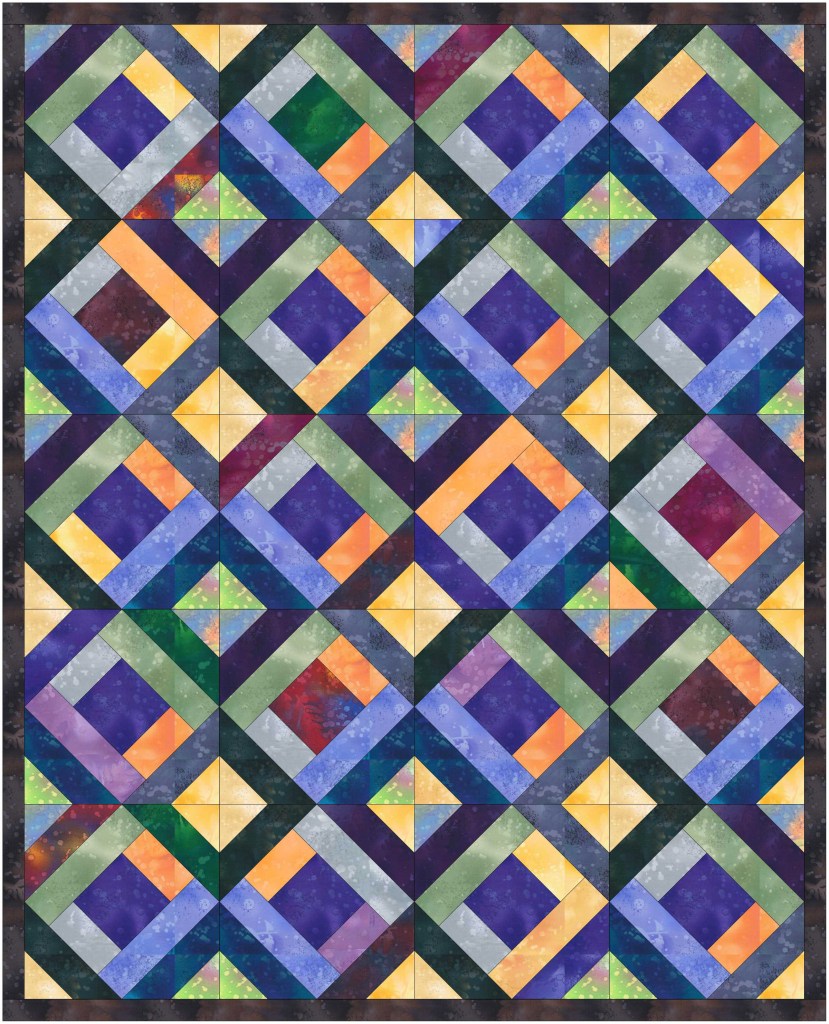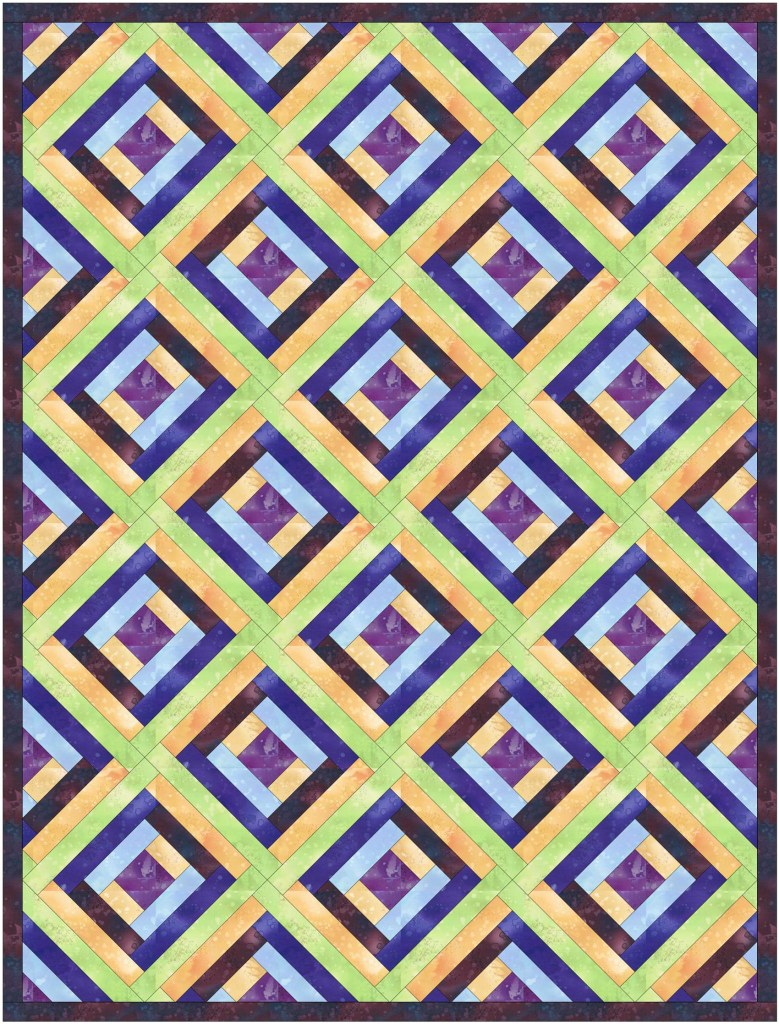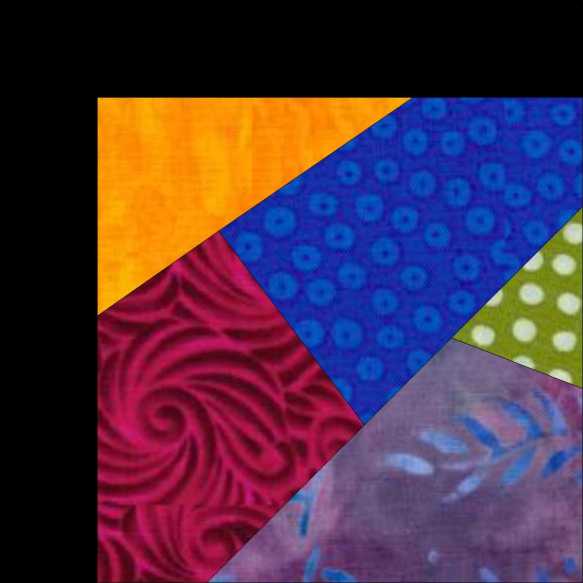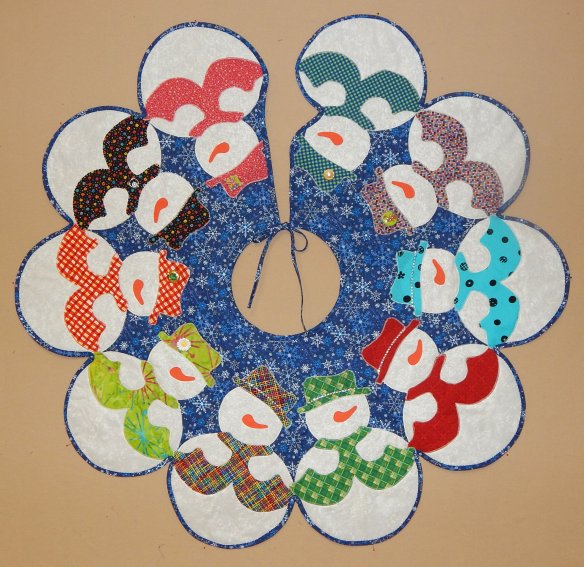Half square triangles are an important design element in many quilts. The split value and diagonal line allow a variety of dynamic designs.

One of my quilt groups has been discussing HSTs because some of us love them and some have limited tolerance for them. It matters because we regularly do block exchanges.
One member recently sent a picture of a beautiful depression block quilt, and that got the discussion going again. A depression block quilt is made entirely of HSTs!


Not being much of a rule-follower, I got to speculating about how we might make this quilt using strips instead of HSTs. (Yes, I get that the original idea was to use up small scraps, but what if you just wanted the overall effect without all those HSTs?) My friend Mary B encouraged me to develop this idea, so here we go.
I did a number of experiments with Electric Quilt 8 (EQ8), which produced all the illustrations for this post. I learned that the most important element in the success of this quilt is contrast between the values (rather than the colors) of the fabrics. (All the illustrations use Fossil Fern fabrics from the EQ8 fabric library.)
I first tried drawing a block that used strips of lights and darks in place of the rows of triangles. This would simplify construction significantly.
Here’s the block:

And here’s the quilt:

Then I tried a traditional Courthouse Steps block set on point to mimic the depression block effect.
Here’s the block:

And here’s the quilt:

Finally, I changed up the color arrangement in the traditional Courthouse Steps block to provide more variation.
Here’s the block:

And the quilt:

So! I’m not sure my variations are a good substitute for the traditional Depression Block quilt, but it was fun and I do like the quilts. What do you think, Mary B?














